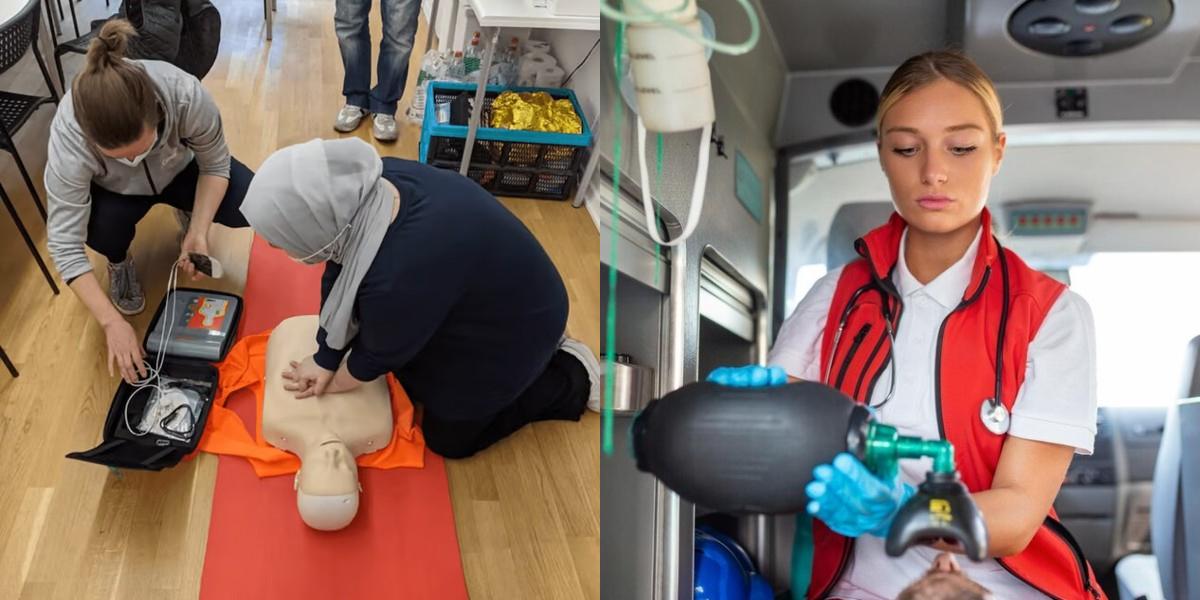CPR-BLS vs Emergency Medical Technician

Key Points:
- CPR-BLS providers perform basic life support, while EMTs have a wider range of emergency medical services.
- CPR-BLS providers typically earn less than EMTs, who have more advanced training and responsibilities.
- EMT jobs are more widely available than CPR-BLS positions, as they are required in more settings.
- CPR-BLS training is shorter and can be done online, while EMT training is longer and requires in-person instruction.
- CPR-BLS training is less expensive and takes less time to complete compared to the more extensive EMT training program.
When it comes to emergency medical care, there are several different roles and certifications that individuals can pursue. Two common certifications are CPR-BLS (Basic Life Support) and Emergency Medical Technician (EMT). While both certifications involve providing medical assistance in emergency situations, there are some key differences between the two. In this blog post, we will explore the roles and responsibilities of both CPR-BLS providers and EMTs, as well as the education and training required for each. We will also discuss the career outlook and salary potential for individuals in these fields.
CPR-BLS vs Emergency Medical Technician: Education and Training
CPR-BLS Education and Training:
- CPR-BLS certification courses are typically offered by organizations such as the American Red Cross or the American Heart Association.
- The training includes instruction on performing CPR, using an AED, and providing basic first aid.
- The certification can usually be obtained through a short course, ranging from a few hours to a few days.
Emergency Medical Technician Education and Training:
- EMT training programs are offered by community colleges, technical schools, and hospitals.
- The training typically includes classroom instruction, hands-on practice, and clinical experience.
- EMT training programs usually take several months to complete.
- Upon completion of the training, individuals must pass a certification exam to become a certified EMT.
CPR-BLS vs Emergency Medical Technician: Career Outlook and Salary
CPR-BLS Career Outlook and Salary:
- CPR-BLS providers often work as part of a larger healthcare team, such as nurses or doctors.
- Job opportunities for CPR-BLS providers can be found in hospitals, clinics, schools, fitness centers, and other healthcare settings.
- The demand for CPR-BLS providers is expected to remain steady, as there is a constant need for individuals trained in basic life support techniques.
- The salary for CPR-BLS providers can vary depending on factors such as location, experience, and the specific healthcare setting. On average, CPR-BLS providers earn a median salary of around $36,000 per year.
Emergency Medical Technician Career Outlook and Salary:
- EMTs often work for ambulance services, fire departments, hospitals, and other emergency medical response teams.
- The demand for EMTs is projected to grow faster than average, with an expected growth rate of 7% from 2020 to 2030.
- The median annual salary for EMTs is around $35,000, but can vary based on factors such as experience, location, and the specific employer.
Final Thoughts
Both CPR-BLS providers and EMTs play critical roles in providing immediate medical care to individuals in emergency situations. While CPR-BLS certification is more focused on basic life support techniques, EMT training provides individuals with a broader skill set and the ability to perform more advanced medical procedures. Choosing between CPR-BLS and EMT training depends on an individual's career goals and level of interest in emergency medical care. Regardless of the certification pursued, both roles offer rewarding opportunities to make a difference in the lives of others.
Dreambound offers programs in multiple locations. For in-depth information on the intricacies of these two vocations, their prerequisites, and steps to join, explore the following blogs:

Vduani Martinez is a part of the Growth team at Dreambound. She creates and fixes workflows and automation to guarantee seamless operations. On top of that, she manages databases to ensure all information is up to date. Vduani is a licensed Electronics Engineer who loves coffee and is a travel enthusiast. Out of the office, she enjoys going on road trips and discovering new cafes and restaurants.



